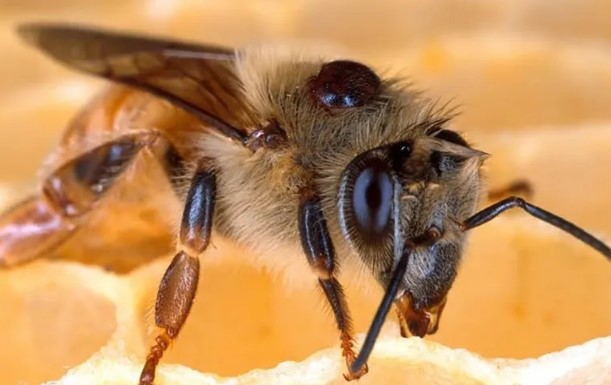Beekeepers: The Embattled Defense Against a Relentless Foe
Varroa mites are the single greatest enemy of honey bees—their health, reproduction, and very survival hang in the balance. These parasitic invaders are more than just pests; they are vectors of destruction, responsible for transmitting over 18 different diseases. They rob hives of future generations, drive colonies to abscond, and infect entire apiaries in their wake.
The damage they inflict is both costly and often irreversible. Entire colonies collapse under their influence, and the ripple effect can devastate beekeeping operations across regions. For beekeepers, defending against Varroa mites is not just a challenge—it's a full-scale war for the future of the bees. For beekeepers, the fight against Varroa mites is not a seasonal challenge—it is a constant war, one that demands vigilance, innovation, and unrelenting effort.
The Varroa Threat: More Than a Parasite
Varroa mites attach to both adult bees and developing brood, feeding on their fat bodies and hemolymph (the insect equivalent of blood). While this alone is harmful, the true danger lies in their role as vectors of disease.
Varroa mites are known to transmit over 18 different viruses, including:
- Deformed Wing Virus (DWV) – Causes bees to emerge with shriveled, non-functional wings.
- Acute Bee Paralysis Virus (ABPV) – Leads to rapid paralysis and death.
- Chronic Bee Paralysis Virus (CBPV) – Causes trembling and disorientation, often leading to hive expulsion.
These pathogens weaken immune systems, shorten lifespans, and compromise the colony's ability to reproduce. As infestations grow, bee populations dwindle, hives collapse, and in severe cases, bees abscond—leaving the hive entirely in a desperate attempt to survive.
Defensive Strategies: Fighting Back
Beekeepers have become resourceful soldiers in this biological war. Common strategies include:
- Integrated Pest Management (IPM): A multi-pronged approach combining cultural, mechanical, and chemical methods.
- Chemical Treatments: Use of miticides such as oxalic acid or formic acid, though resistance is an ever-growing concern.
Click on each photo below to learn more about combating Varroa Mite with Chemical Treatments.
- Brood Breaks and Drone Comb Removal: Disrupting the Varroa reproductive cycle.
***Using a Queen Cage to create a brood break works towards a solution of reducing and in some cases eliminating mite population
- Selective Breeding: Developing mite-resistant bee strains, like those with hygienic behavior (bees that detect and remove infested brood).
- Monitoring: Frequent mite counts using alcohol washes, sugar rolls, or sticky boards to determine infestation levels.
Despite these tools, no "silver bullet" exists. Every treatment comes with trade-offs, and mites are proving increasingly adaptable.
The Cost of Complacency
Controlling Varroa mites is both expensive and essential. Without proper management, an untreated colony will almost certainly collapse within one to two years. Even with intervention, success is never guaranteed. Treatments, whether chemical, mechanical, or genetic, require precise timing and a deep understanding of bee biology.
Here’s what's at stake:
- Pollination Services: Fewer healthy bees mean lower crop yields, affecting food production globally.
- Honey Production: Weak or dead colonies produce little to no honey.
- Genetic Diversity: Repeated losses narrow the genetic pool of resilient bees.
- Economic Impact: The U.S. alone sees tens of millions in annual agricultural losses tied to pollinator decline.
The Road Ahead: Innovation and Hope
Research into genetic resistance, RNA-based virus suppression, and biomechanical hive designs offers a glimmer of hope. Beekeepers, scientists, and policymakers are collaborating more than ever before to develop sustainable solutions.
The key lies in education, adaptation, and collaboration. Whether it’s through shared knowledge in beekeeper networks, university extension programs, or international efforts, the community’s collective experience is its greatest asset
Conclusion: Guardians of the Hive
Beekeepers are not just stewards of honey; they are guardians of pollination, biodiversity, and food security. In their daily work, they confront a microscopic enemy with outsized impact. The battle against Varroa mites is long, costly, and complex—but it is one worth fighting. Because the fate of bees is, in many ways, the fate of us all.











